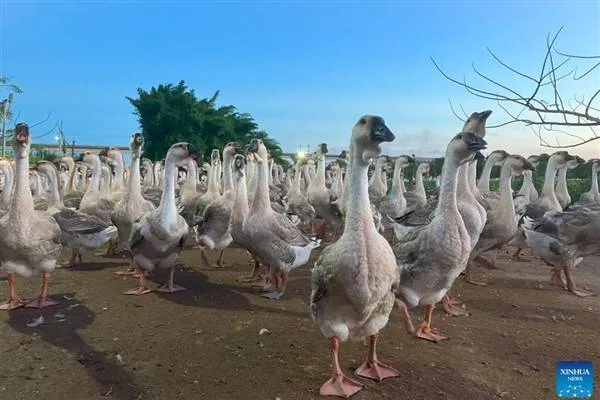Chinese Students Develop AI Program to Treat Sick Ducks with Lion Heads
A team of 16 university students from Shenzhen University has developed an artificial intelligence (AI) program that helps farmers identify sick ducks with lion heads and increases the herd's survival rate by 30 percent.
A team of 16 university students from Shenzhen University has developed an artificial intelligence (AI) program that helps farmers identify sick ducks with lion heads and increases the herd's survival rate by 30 percent.
Ducks with lion heads are a type known for their high quality but are challenging to breed in the Chaoshan region of southern China. Farmers in Chenghai have relied on their experience for over 300 years to monitor the ducks' health by observing how long they remain inactive and by feeling their body temperatures with their hands.
However, any illness can wipe out a farm in just 10 days. In the winter of 2018, thousands of ducks with lion heads unexpectedly died in an outbreak, with only five surviving. Jin Shutao, a duck farmer in Houxi, returned to his hometown as a young entrepreneur and considered harnessing the power of technology.
In 2022, he invited 16 students from the Shenzhen University-Tencent Cloud AI BEng program to the duck with lion heads breeding cooperative. With guidance from teachers at the university and engineers from the Chinese internet giant Tencent, they aimed to tackle this challenging problem.
The team faced the difficulty of identifying sick ducks in an area of 500 square meters where more than 4,000 ducks were crowded together amid cacophonous sounds. They decided to diagnose the illness by measuring a duck's duration of immobility and divided the project into four groups: hardware, front-end, back-end, and algorithm.
However, their first challenge was installing cameras because traditional QR code-based identification methods used for animals like cows, sheep, or pigs didn't work for ducks. To collect enough data for AI training, the students captured images using existing farm cameras and labeled them manually.
The labeling process involved categorizing and labeling 6,000 images of 300,000 ducks. Team member Wang Yifeng emphasized the need to be 100 percent focused, as even the slightest mistake could affect the results of AI training.
After dozens of model adjustments, the students learned that there was no one-size-fits-all algorithm. Due to the thick feathers of adult ducks with lion heads, measuring their body temperature was challenging. Therefore, they turned to identifying sick young ducks as a complementary measure.
Some students even found through research that duck diseases were closely related to weather conditions such as typhoons and smog. Therefore, they added data observation and analysis functions to the program for optimization. Currently, the program provides real-time alerts for "unmarked ducks" and "feverish ducks," including temperature, humidity, PM2.5 levels, and data change trends on the farm. This has helped increase the survival rate of ducks with lion heads on the farm by 30 percent.
Shen Linlin, Director of the Visual Research Institute at Shenzhen University, emphasized the challenges of the work, saying, "Developing AI is not about sitting in an air-conditioned room and writing code. It's about learning to write code in duck manure."
British News Agency
















